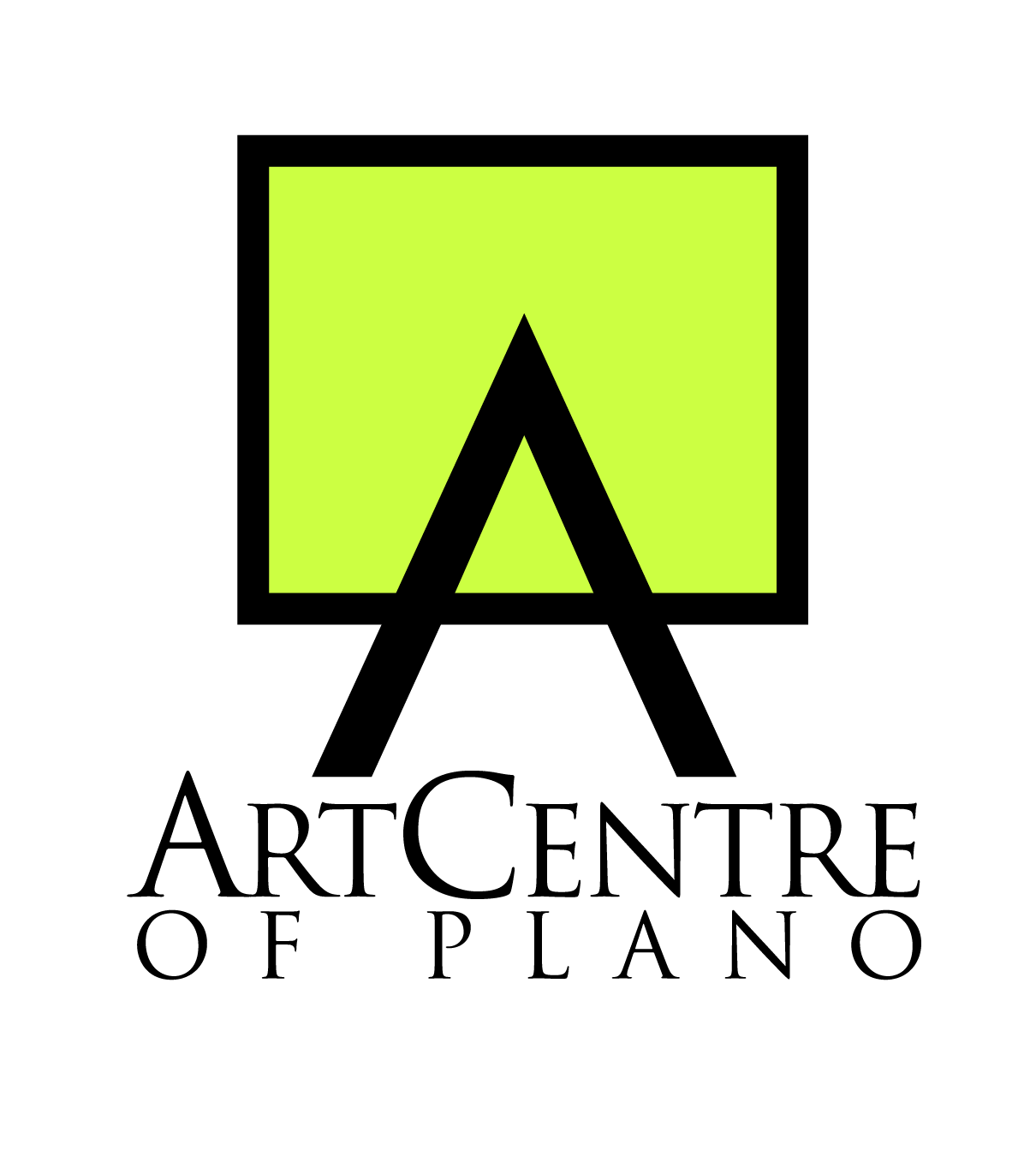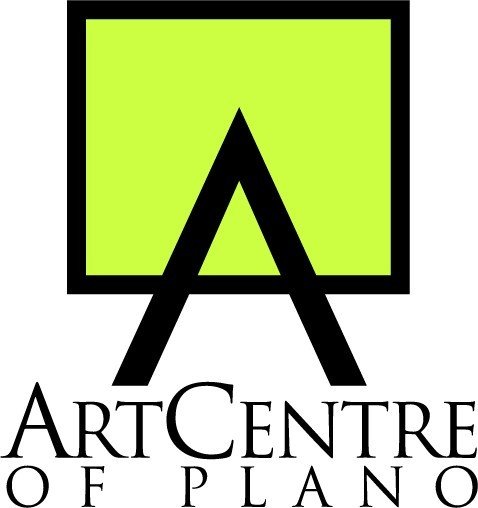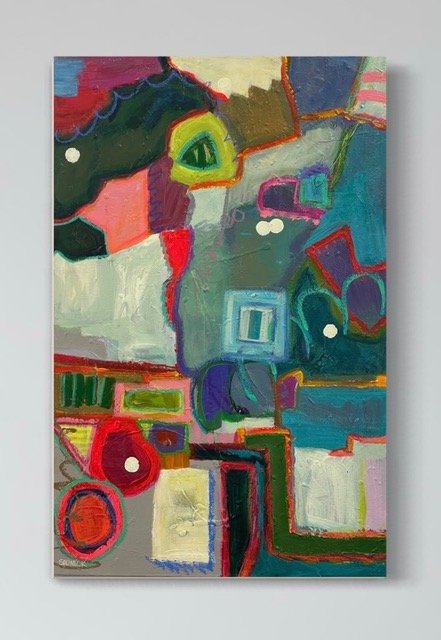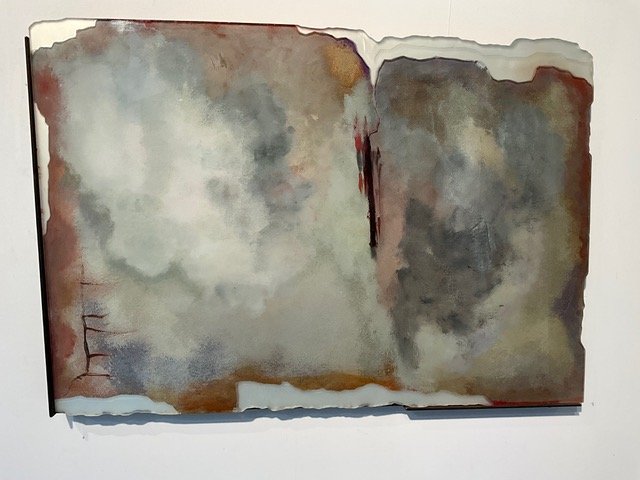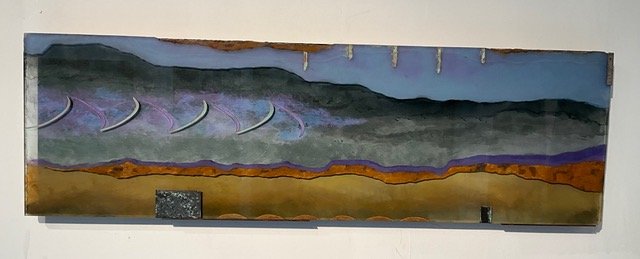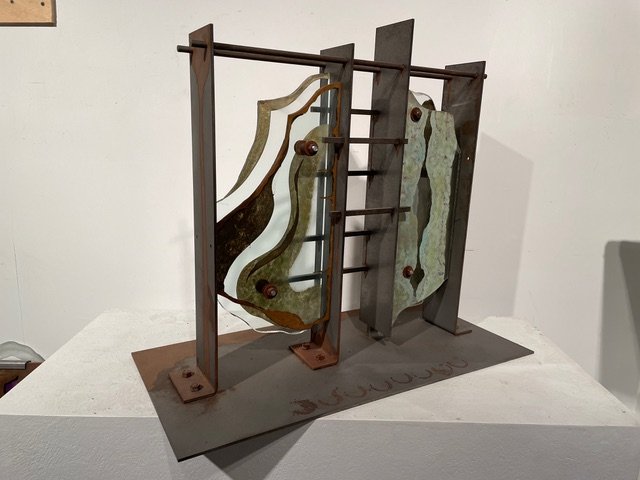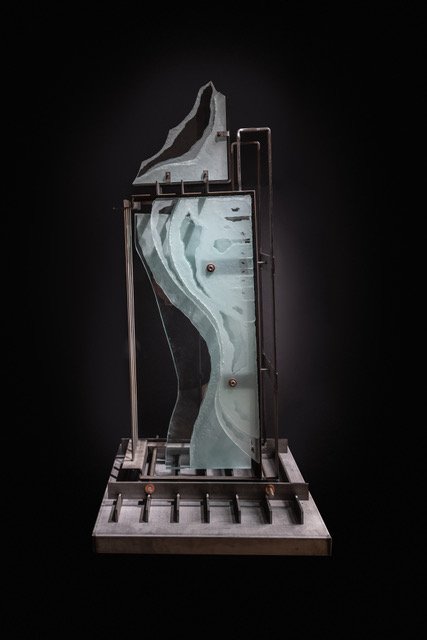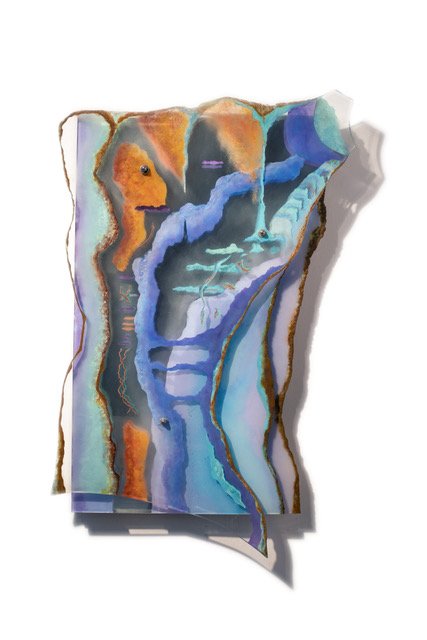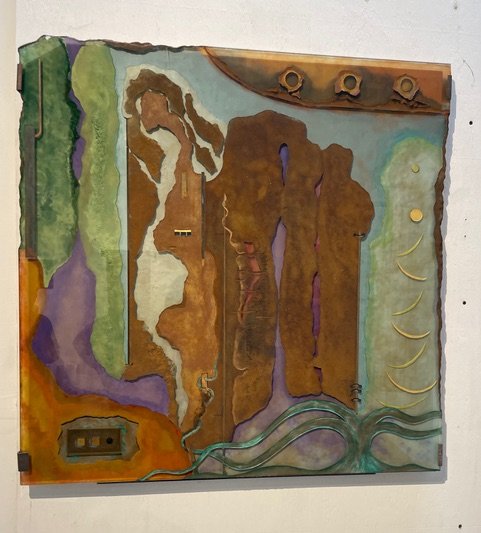
A Contemporary Duo
Julie Shunick Brown and Michael Sutton
-
In first grade, in Corpus Christi, my piece was chosen to represent my grade in the city wide school art exhibition. In second grade, my teacher took my parents aside at a gathering to tell them about my talent and showed them something I had drawn and colored. Those two events, the exhibition and the conversation, influenced and inspired me on a deeper level than I realized until many years later.
In high school, I realize now, I was a total romantic, loved Monet and the other impressionists, Tchaikovsky, Jimmy Smith, Dylan Thomas, ee cummings. I developed an odd theory that art cannot be taught. I decided that craft, like painting or carving, could be taught, but art, itself, was something one either got or didn’t. I was young. ( I wish I could take a Mary Vernon class right now !) I eventually became very influenced by abstract expressionism, probably due to the influence of the Fort Worth Art Museum, which is now The Modern.
In 1976, a shy girlfriend asked me to take a stained-glass class with her in Houston. I enjoyed it and excelled. Then I started designing my own pieces. I noticed that I was using my mind in a way that was totally different from any time before. I came to love that experience. In the early eighties, I began sandblasting glass, then designing furniture using glass. In 1986, I showed my first sculpture as fine art, rather than functional. The piece won 1st Place in sculpture and Best of Show. From the late eighties and early nineties in Arizona, until around 2010, in Dallas I worked with interior designers and architects who were familiar with my work and commissioned pieces of functional or fine art. In more recent years I have focused strictly on sculpture involving glass and metal, often painted and treated with chemicals. While most of my work is in private collections, it can be seen locally at Malai Kitchen restaurants as they have commissioned me to make pieces for all their locations. I was one of 12 Texas sculptors invited by The ArtCentre of Plano to participate in Texas Sculpts II, July 8-August 26, 2023.
-
For me, at this later time in life, my artwork must have intention, it must have a reason to exist, in order for me to be motivated to do it. My intention is to make the world a better place. Here’s my take on how that could happen:
When you react to something, you go through a thought process. It can seem more like a feeling than a thought process. I’ve read that its energy moving along a neural pathway. Neural pathways get “larger” the more they are used. Some are big, some are barely there, some have yet to be created. I want to take the viewers who like my work though a process that involves realizing that things seen more closely can be quite different from a first impression. If I can do that in a way that the viewer finds beautiful and if the process is engaging, then perhaps my pieces can reinforce a neural pathway that leads to a positive interpretation of things to be discovered. Maybe that re-enforced discovery pathway will be travelled, not only when reacting to art, but also when one encounters other things that are different, like cultures or points of view or even people. I use metaphor all the time in my work and symbols occasionally, but I like to keep it somewhat subtle, especially with symbols, often using only a segment, for example. My art usually involves some interplay between architectural or industrial elements and organic processes. Glass is the biggest organic component, but color and patina are crucial to the organic aspect, as well. Each sculpture begins with images, usually vague, that come to me. Where they originate is a mystery. I try to capture the hazy picture on my gridded sketch pad. Things become increasingly specific as I translate this into actual materials. Due to the nature of glass and metal and the techniques I use, every detail must be clear before I start the physical work. Every detail, that is, except color. Applying color is the last and most fun part, after the initial design aspect. Color is magic and i can get joyfully lost in it.
Julie Shunick Brown
-
Julie Shunick Brown is a contemporary painter working in Dallas, Texas. A native of Nevada, she grew up in Arizona and Northern Virginia. She began drawing and painting very young, studying with private instructors, attending The Corcoran School of Art, and sketching in The National Gallery and museums in Washington, D.C.
Julie graduated with honors from Arizona State University and continued studying painting and drawing, most recently at Southern Methodist University. After a successful career with Procter & Gamble, she returned to full-time painting in 2012.
Julie’s work has been represented by galleries in Dallas, Santa Fe, Oklahoma City, and New York. Her paintings are held in private and corporate collections across the United States, Canada, and Spain. Julie’s studio is in the Tin District of West Dallas, at 707 Fabrication Street.
-
Everything I see or experience influences my painting - family, friends, travel and the ordinary joys and losses of life. Classically trained, I spent 20 years working realistically in oil and watercolor - still life, landscape, figures. My painting evolved and is now nonobjective. Abstract and intuitive, it starts with a few lines or a single random hue and unfolds deliberately, focusing on composition and color. Built in layers, many only partially visible, the paintings are ambiguous and open to interpretation.
Michael Sutton
Have Questions?
email@example.com
(555) 555-5555
123 Demo Street
New York, NY 12345
